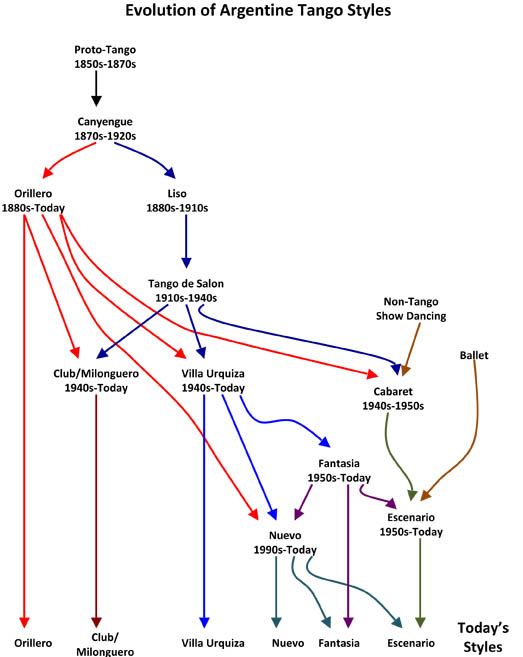A Chart of Tango Evolution
UNDER CONSTRUCTION
The Beginnings of Tango
Canyengue Emerges
Tango Goes to Europe
Non-Argentine Styles of Tango
The Orillero-Liso Split
The Development of Tango de Salon
The Development of Estilo Villa Urquiza
Clubs de Barrios and the Emergence of Club/Milonguero
The Development of Stage Tango: Cabaret
Exhibition Dancing: Fantasia
The Next Evolution in Stage Dancing: Escenario
The Golden Age Ends and Tango Goes Underground in Argentina
A Renaissance: Argentine Tango Reemerges into Public View
Nuevo: An Analytical Reorganization of Tango Movements and a New Style
The New Polarization of Styles
Acknowledgments and Comments
Eduardo Arquimbau, Miguel Angel Balbi, Juan Bruno, Juan Carlos Copes, Christine Denniston, Mariela Franganillo, Nito Garcia, Barbara Garvey, Janis Kenyon, Alberto Paz, Mingo Pugliese, Susana Miller, Richard Powers, Tom Stermitz, Daniel Saindon, Sergio Suppa, Daniel Trenner and Ruddy Zelaya have contributed ideas that have found their way into this analysis of Argentine tango's history and the evolution of its styles. In developing this history I relied heavily on secondary sources. I supplemented the secondary sources to a limited extent with a few primary sources—that is the shared memories of a few individuals who begin dancing Argentine tango toward the end of its golden age. I further supplemented these sources with my own analysis of the rhythmic and step elements of contemporary Argentine tango to draw some of the historical connections between the various styles.For another perspective, see Christine Denniston's webpage history-of-tango.com.
